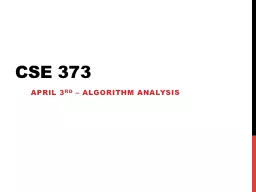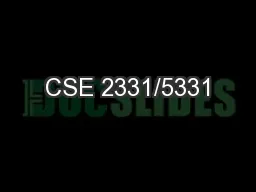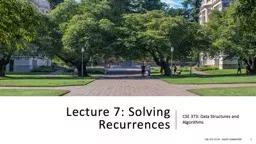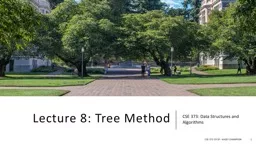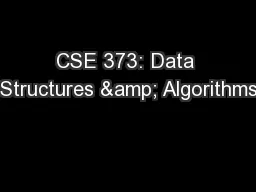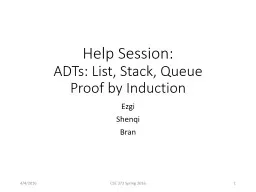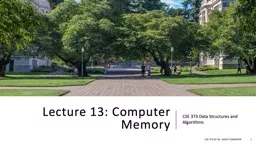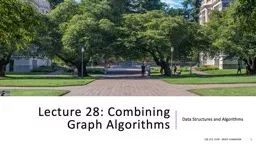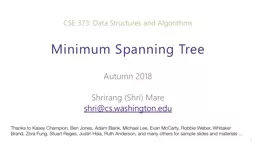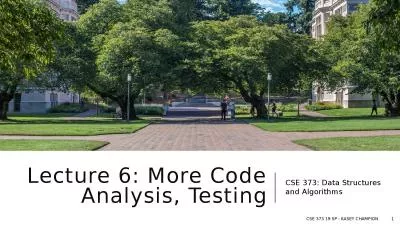PPT-Cse 373 April 3 rd – Algorithm Analysis
Author : bikersnomercy | Published Date : 2020-08-07
Assorted minutiae HW1P1 due tonight at midnight HW1P2 due Friday at midnight HW2 out tonight Second Java review session Friday 1030 ARC 147 Todays Schedu le Algorithm
Presentation Embed Code
Download Presentation
Download Presentation The PPT/PDF document "Cse 373 April 3 rd – Algorithm Analy..." is the property of its rightful owner. Permission is granted to download and print the materials on this website for personal, non-commercial use only, and to display it on your personal computer provided you do not modify the materials and that you retain all copyright notices contained in the materials. By downloading content from our website, you accept the terms of this agreement.
Cse 373 April 3 rd – Algorithm Analysis: Transcript
Download Rules Of Document
"Cse 373 April 3 rd – Algorithm Analysis"The content belongs to its owner. You may download and print it for personal use, without modification, and keep all copyright notices. By downloading, you agree to these terms.
Related Documents

